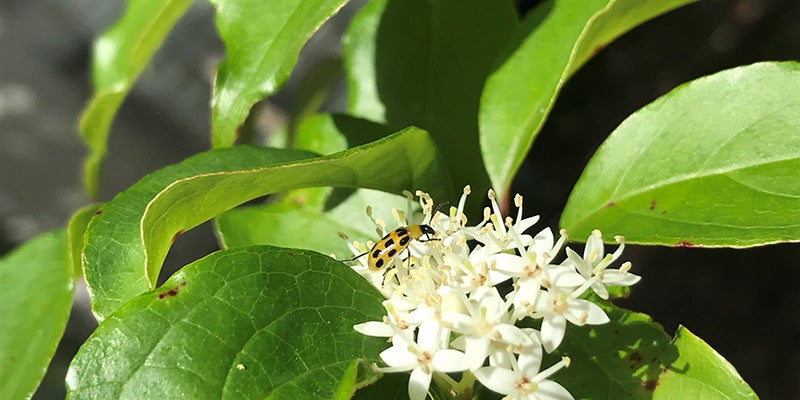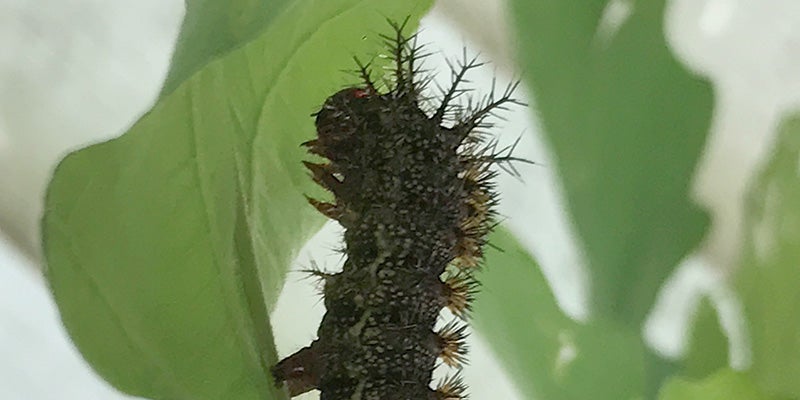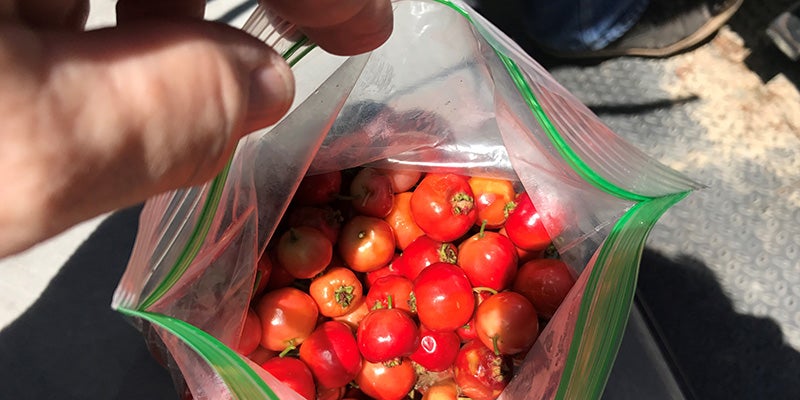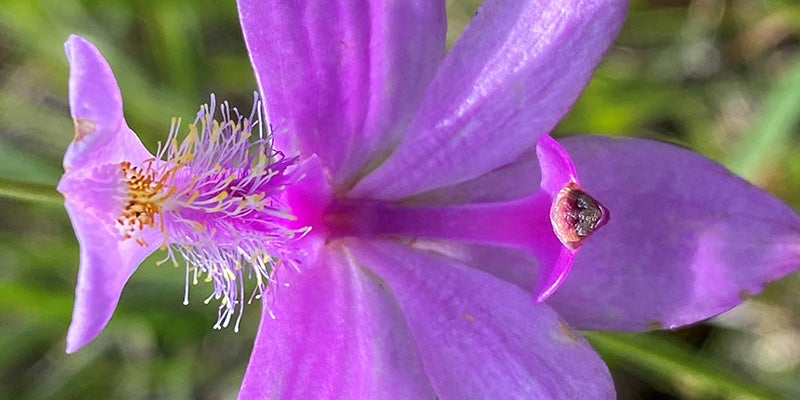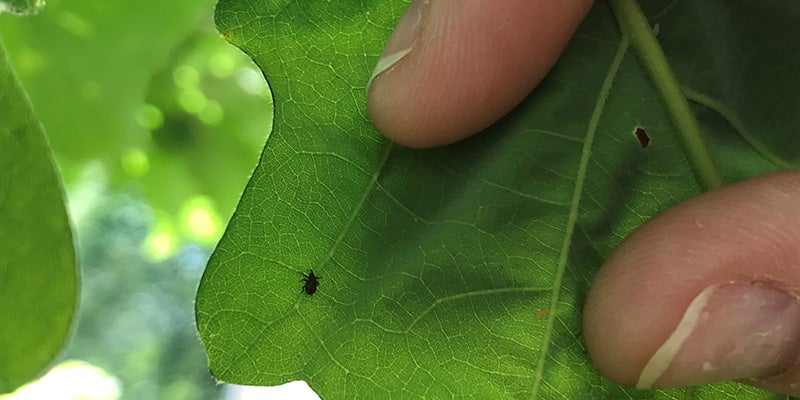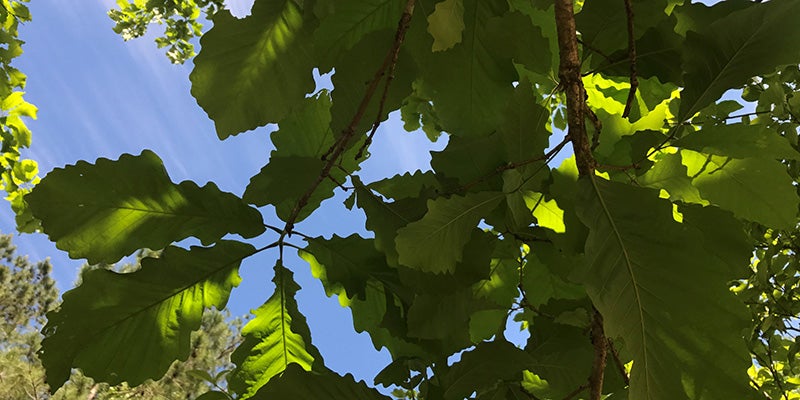Much revealed during a short walk in nature
Published 7:00 am Wednesday, April 22, 2020
By Patricia R. Drackett
Director, The Crosby Arboretum, Mississippi State University
Assistant Extension Professor of Landscape Architecture
Have you been spending a lot more of your time at home lately? If you are lamenting that there’s not much to do in your backyard, think again.
Even in a few short steps, you might find there is more than you thought to discover. Stand still and look closely at the plants in your yard. Take someone else along with you and compare notes about what you see. Perhaps you’ll find an insect making a meal of a leaf, or otherwise interacting with the plant, such as the group of spikey caterpillars spotted recently on a swamp chestnut oak in the Arboretum’s maintenance area.
Research associate Jenny Ryals from the South Mississippi Branch Experiment Station in Poplarville first noticed the unusual spikey caterpillars scattered throughout the tree’s trunk and branches. It didn’t take long for her to make an identification. The caterpillars turned out to be the buck moth caterpillars I’d heard so much about for many years, that would drop onto unsuspecting people sitting on benches below live oak trees in New Orleans parks.
The spines on the buck moth caterpillars cause a burning sensation when contacting the skin. If you have young children, make it a project to acquaint them with some of the more unfriendly critters they should not touch, which include the very distinctive Saddleback caterpillar. Looks can be deceiving. Look up Puss Moth caterpillars, which look so soft and cuddly, but most definitely are not!
Jenny mentioned the field botany class she is taking with Dr. Mac Alford at The University of Southern Mississippi, now being taught by video. Dr. Alford has led well-attended field walks at the Arboretum, and it was a delight to see him again in his short video made on the Natchez Parkway, about the differences between male and female Yaupon hollies. We put his information to use to compare two hollies near our maintenance shed. Putting it very briefly, female hollies have berries, and male flowers do not develop into berries.
Standing under the Swamp Chestnut oak, we commented on its attractive shaggy bark and leaves. If we have a particularly chilly fall, the leaves will turn beautiful shades of burgundy. Jenny pointed out that one of the leaves held a tiny weevil. She identified the fact he had an even smaller snout. She found a cucumber beetle wandering across a flower cluster. We also noticed many honeybees working the flowers, most likely from the nearby hives tended by Jac Coleman.
Terry Johnson has been snapping photos of the spring blooms he spots as he travels along the pathways on his maintenance activities. Recently, he captured pictures of both Snake Mouth orchids and Grass Pink orchids. Grass Pinks are common orchids seen in wet pine savannas of the Gulf Coast, and are usually brightly colored, but Terry discovered a pale pink version in our south pitcher plant bog.
Spending time in nature can be very rewarding, and memorable. I remember a presentation at a native plant conference about an educational program in North Carolina that brought children outdoors to teach topics across the curriculum through hands-on activities. The number of times that the students were outdoors during the school year was not that high, perhaps five days total. The speaker described how the program had been met with little interest by school officials, who felt that being outdoors would be much less productive than being in a traditional classroom. However, at the end of the year, when it was evident that test scores had risen for the students who had participated in the program, it became very popular!
Do you have a child or two in your family? If so, start creating some memories by learning about the world outside your door. Encourage children to write an account of their day of discovery, and perhaps start a nature journal or sketchbook. Ask them to relate a story of what they found to others in your family, perhaps to those who do not have the opportunity right now to go outside.
To explore a variety of topics on home landscape design and maintenance, plants, and gardening, visit the MSU Extension Smart Landscapes website at http://extension.msstate.edu/smartlandscapes or the Smart Landscapes Facebook page.
The Crosby Arboretum is located at 370 Ridge Road in Picayune, at I-59 Exit 4. To receive updates on activities, including when we will be open to the public again, sign up for our email listserv at “Events Updates” on the main menu on our website at http://crosbyarboretum.msstate.edu.


